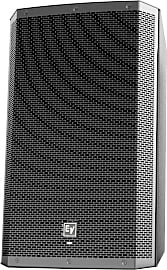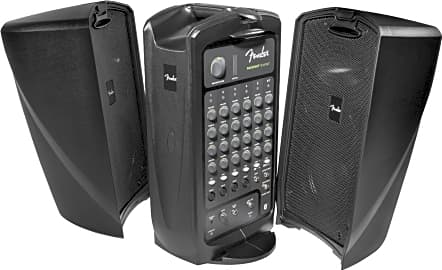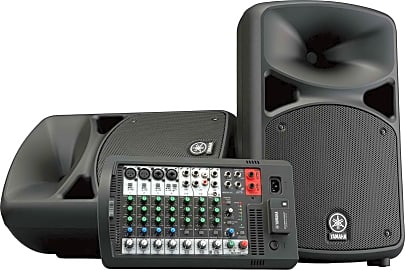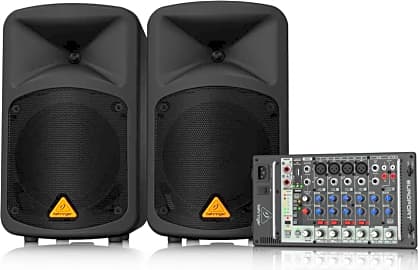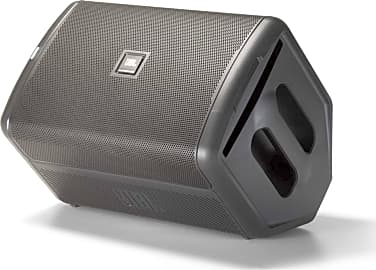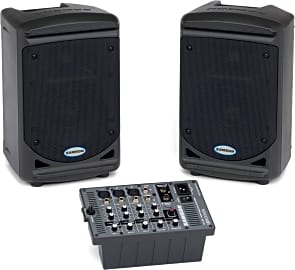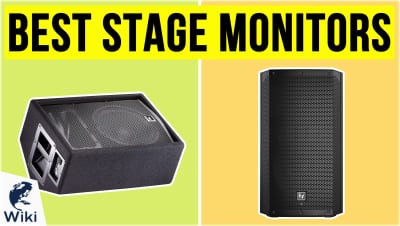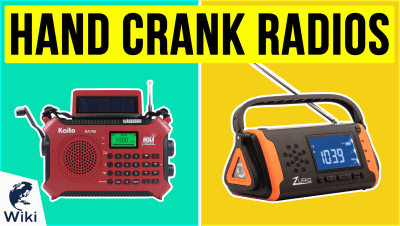The 10 Best PA Systems

This wiki has been updated 44 times since it was first published in February of 2015. Whether you're a musician looking to create your own immersive concert experience or a public announcer trying to get through to the back row of the auditorium, one of the PA systems on our list is sure to do the trick. With most featuring multiple channels, onboard effects, and built-in mixing consoles, it is easy to get the sound you're looking for without the need for further outboard gear. When users buy our independently chosen editorial choices, we may earn commissions to help fund the Wiki.
Editor's Notes
October 29, 2020:
The digital age has ushered in a new wave of requirements for PA systems. As a growing number of artists favor loopers, backing tracks, and compact digital instruments with controllable output levels, we are seeing more live music being played in smaller venues that do not need a large static in-house speaker setup. The systems in our ranking reflect this, as all are eminently portable and are ideal for small to medium-sized venues that don't have their own sound system. Additionally, some double as perfect on-stage monitors for use on larger stages.
One such model is the JBL Professional Eon One Compact with its angled sides, which allow it to be placed horizontally on stage with the speaker facing up at the performer for the purpose of monitoring their own sound. Alternatively, it can be placed vertically, facing the audience, like a regular PA speaker. This replaces the previously-ranked JBL EON615, which although louder, is not as versatile as its more up-to-date counterpart.
Next, we added the Bose L1 Compact, as while we have witnessed similar designs with the tower and woofer configuration (such as the HK Audio Polar 10 and the Peavey P2 Powered Line Array System), Bose has used their cutting edge sound designing technology to create a truly impressive sonic projection that can span an entire stage from this single slim stack of speakers.
May 02, 2019:
A closer look at this year's market revealed a few worthy additions to this ranking, including a big, powerful standalone speaker from JBL and a decidedly modern offering from Electro-Voice that boasts Bluetooth connectivity to any mobile device. The Fender Passport is the only member of our previous top three to remain there, as both the JBL and Behringer models previously topping our list were ousted by a superior Behringer (bringing a massive 2000 watts) and the aforementioned EV model. Elsewhere, the effective and highly portable Samson XP150 got pushed back to number 10, more because of the addition of new models than because of anything deficient in its design.
Special Honors
BishopSound Custom PA Systems BishopSound has been designing and manufacturing speakers in their Yorkshire, UK, factory since 2016, but their heritage extends back to the 1960s and the Great British Invasion, when companies like Marshall, Vox, and Orange rocked the world. The company now produces a range of PA systems to suit a whole array of environments, including custom active, passive, and hybrid bundles, that are shipped all over the world. bishopsound.com
Which System Is Right For You?
A decent average is between 5 and 10 watts per person in the audience.
A PA system is usually comprised of everything needed to project live voices or music: one or two speakers, a mixing board, speaker stands, and sometimes even a microphone and cables to connect it. PA systems benefit anyone looking to amplify their voice or live sounds. However, different circumstances call for different hardware.
For a professor in a lecture hall, a medium sized PA system will allow everyone to hear what is being discussed. An additional benefit in this instance is the ability to create recordings of the lecture notes through the PA’s output. A higher powered PA system may be required to fill a large hall in a public speaking setting, but may only call for a basic mixer, as only one person is talking at a time. By contrast, a rock band will need a PA with a mixer and multiple channels to accommodate every member.
Once the user, venue, and audience size have been factored in, it is necessary to estimate how many watts the PA system will need to have. A decent average is between 5 and 10 watts per person in the audience. This leaves plenty of room to increase the volume if needed due to loud crowds or background noise. At 10 watts per person, a construction team could be working next door and the audience would still hear you speaking.
Important Features Of A PA
Since PA systems come in so many different shapes and sizes, and with so many different features, it'd be wise to familiarize yourself with how certain parts of a PA function. We spoke of watts above, and that's a great way to determine how powerful a given PA is. But that might not actually be important to you. If, for example, you simply need a PA to deliver small speeches to a roomful of people at the town hall, you can safely shift your focus away from power, focusing instead on how easy the PA is to setup and use, and how portable it is.
We spoke of watts above, and that's a great way to determine how powerful a given PA is.
All PA systems offer some way to plug in a microphone, and the most common means by which this is achieved is the balanced XLR cable. Users interested in utilizeing wireless microphones should double-check both the specs and hardware of their mic system and the features of the PA they are considering, as there can sometimes be a conflict between the two. And if you need to plug instruments of any kind directly into your PA, make sure it has 1/4-inch inputs, or, better yet, hybrid XLR jacks that can accommodate either type of plug.
A PA system that has a mixer, two speakers, a monitor, and various cables can take up a lot of space, and size can become a significant factor if you travel in a small car or need to transport all of a band's gear. Fortunately, there are all-in-one PA systems available that travel easily and take up minimal space. These can usually be identified by images that show their speakers turned inward around the main mixing console, creating a single, portable item with at least one sturdy handle.
Also, think about the actual mixing capabilities of the PA system. Some systems offer only one input channel and have very little control. If you only need to project a single voice or play music from a device that has its own equalizer, this may not be an issue. If multiple voices or instruments will be using the PA on a regular basis, however, the mixer's requirements will increase. Systems that offer multiple channels and full EQ control are a better choice for this scenario.
The Birth Of The PA
The first PA was called the Automatic Enunciator, and was marketed as a valuable tool for hotels in the beginning of the 20th century. It allowed public announcements to be broadcast to multiple rooms at once, and it set the stage for all future systems. In just 20 years, new technologies were created and implemented, which made PA systems closely resemble the simple systems still in use today: a microphone, amplifier, and one or more loudspeakers.
Further technological advancements have only increased the features and functions of these machines. The large amplifiers in old systems have been replaced with smaller, more effective units. Cables that cancel out interrupting frequencies are industry standard now, as well. These new systems may be complicated, but the basic function of a PA has remained the same for over 100 years now.


